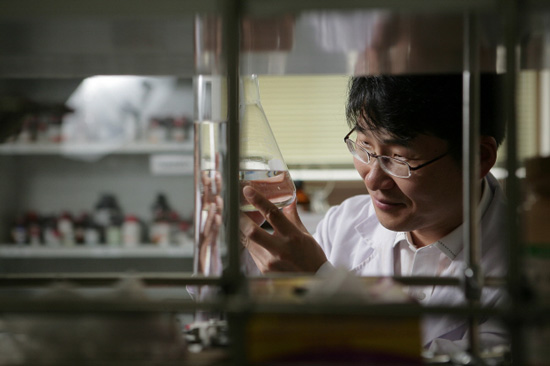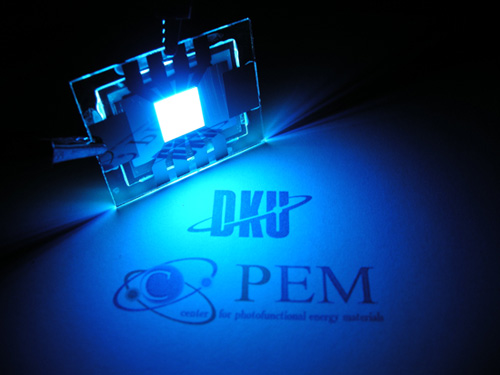Develops World’s First Blue AMOLED Element with 30.1% Efficiency
Proves Theory of Top Efficiency with Empirical Evidence
Dedicated to Improving Consumption Power of OLED Products

Professor Jun-Yeop Lee’s (Department of Polymer Science and Engineering) research team has succeeded in developing the world’s first element with a luminous efficiency rate over 30% from the blue element that is used for AMOLED, a widely applied display element for smart phones and devices. The efficiency rate proved to be 30.1% for the blue elements jointly developed by Professor Jun-Yeop Lee’s research team and Professor Chil-Won (an industry-university cooperative research professor), the highest efficiency rate that an OLED element can reach theoretically. This is especially significant for Professor Lee’s research team, since it proved the highest theoretical efficiency rate of OLED elements through experimentation for the first time globally. The results of this research have been posted on the internet breaking news edition of Advanced Materials, a world class academic journal in materials, last June 21 and was acknowledged for its accomplishments.

Until now, although elements with efficiency rates over 20% in red and green elements of AMOLED were developed and have been applied to displays, blue elements were only showing around 10% efficiency causing increase in power consumption levels of machines applying AMOLED. To improve such problems, Professor Lee’s research team has been focusing on blue element development from year 2008. Starting with the development of blue elements with 18.4% efficiency in 2009, Lee’s team also succeeded in developing blue elements with 25.4% efficiency, which was the world’s highest efficiency record in the world at that time in 2011.

The blue element developed in the recent study, boasting the world’s highest efficiency rate, is made from Indole Pyridine and is expected to significantly contribute to a decrease in power consumption of smart phone AMOLED displays, OLED TVs, and OLED lights. Also, this exclusively developed element is expected to bring domestic production of OLED materials and enhance the competitiveness of the domestic OLED industry.
“This research sets a basis for the significant improvement in the increasing power consumption problem, which has been pointed out as a constant problem in OLED related machines, and [that he expects] it will contribute to future OLED market expansion,” commented Professor Lee.